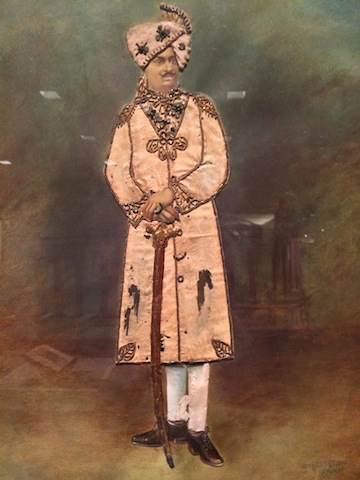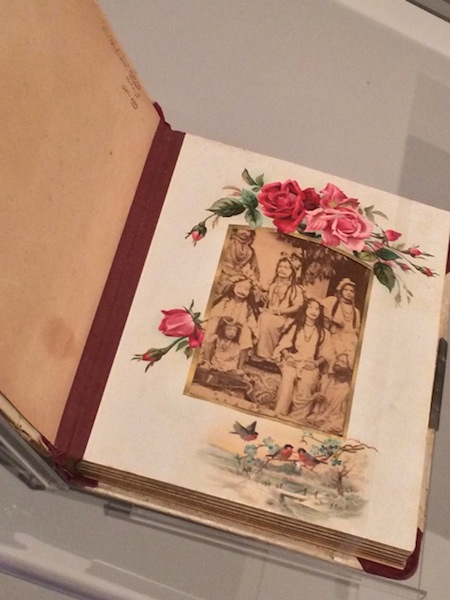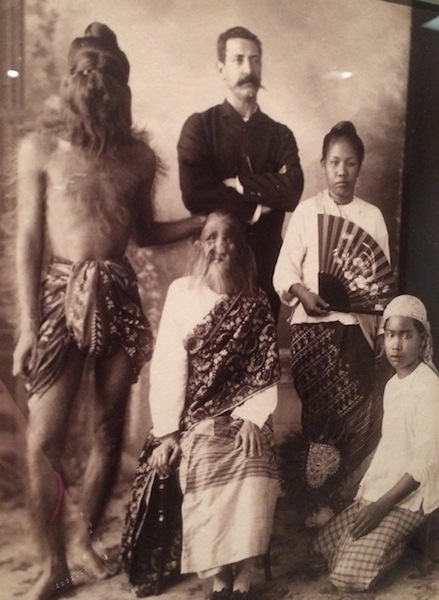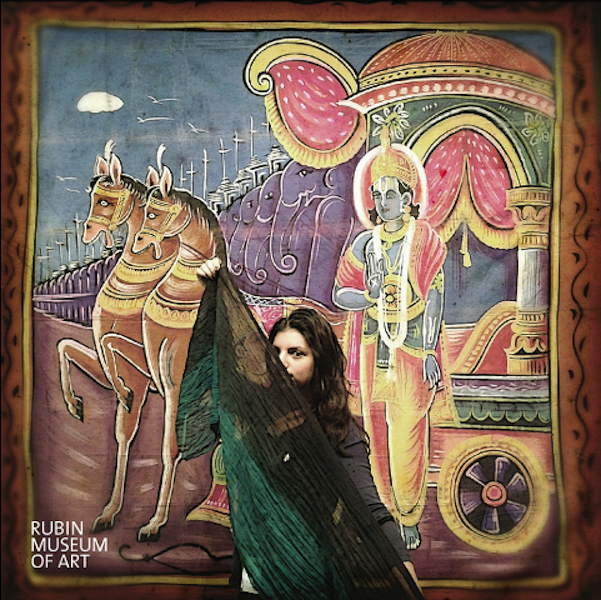Ashley Frenkel, our guest blogger, is an Education intern at the Rubin Museum where she assists with Adult & Academic Programs. Ashley is a junior at New York University where she majors in Art History.
Ashley Frenkel: Sepia tinged photographs are what I expected to see when visiting Allegory and Illusion: Early Portrait Photography from South Asia, the Rubin Museum’s newest exhibition. In fact, the majority of photographs are painted, either entirely or partially, often with rich and luminous colors, and men and women are often adorned in bedazzled costumes, accentuating their social status.
 Traditionally portraits are used to preserve a person’s legacy by capturing their likeness. In this exhibition, portraits capture the oddities of life and the exotic from a variety of regions, including Burma, Sri Lanka, India and Nepal.
Traditionally portraits are used to preserve a person’s legacy by capturing their likeness. In this exhibition, portraits capture the oddities of life and the exotic from a variety of regions, including Burma, Sri Lanka, India and Nepal.
Cross dressing eunuchs (hijras) of India, and The Hairy Family of Nepal, are two particularly interesting examples. Although the Hairy Family had a genetic mutation that resulted in their bodies being covered completely with hair, especially their faces, they lived in the Nepalese royal palace, and their touch was thought to bring good luck to the royal family.

 Taking a photograph in the 19th century was by no means as easy as it is today; as confirmed by an enormous period camera and delicate glass negatives on display. The juxtaposition of original photographs, as well as their painted counterparts, both highlight the creative process. The final stage of one type of viewing process is conveyed with a hands-on object: an antique stereoscopic viewer held up to the light reveals how two photos can be seen as one seamless, three-dimensional image.
Taking a photograph in the 19th century was by no means as easy as it is today; as confirmed by an enormous period camera and delicate glass negatives on display. The juxtaposition of original photographs, as well as their painted counterparts, both highlight the creative process. The final stage of one type of viewing process is conveyed with a hands-on object: an antique stereoscopic viewer held up to the light reveals how two photos can be seen as one seamless, three-dimensional image.
 Aside from the abundance of learning opportunities, which I love due to my art history dorkiness, is the opportunity to interact with the exhibition. I mentioned the handheld stereoscopic viewer, but there is also a chance to take a photo against a painted background inspired from those in the exhibition. You can have your photo e-mailed to yourself and submit it to the Rubin Museum to become a part of the compilation of portraits.
Aside from the abundance of learning opportunities, which I love due to my art history dorkiness, is the opportunity to interact with the exhibition. I mentioned the handheld stereoscopic viewer, but there is also a chance to take a photo against a painted background inspired from those in the exhibition. You can have your photo e-mailed to yourself and submit it to the Rubin Museum to become a part of the compilation of portraits.
 By exploring the allegories, cultures, and concepts these pieces represent and the layered techniques used to express them, you will come to understand how 19th century Southeast Asian photography can be viewed through multiple interpretative lenses.
By exploring the allegories, cultures, and concepts these pieces represent and the layered techniques used to express them, you will come to understand how 19th century Southeast Asian photography can be viewed through multiple interpretative lenses.
So whether you’re an art history buff like me, or a gender studies, political science, anthropology, communications, visual arts or anything-else-kind-of-studies-person, this exhibition is for you.



